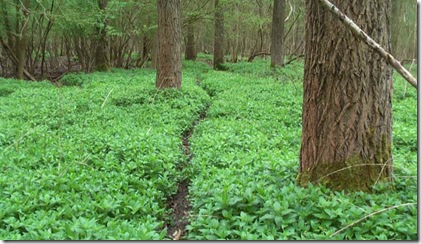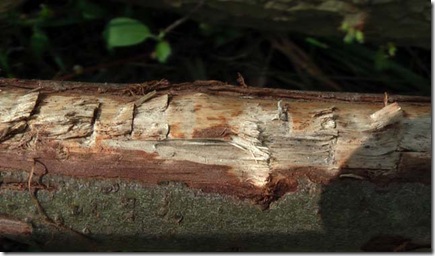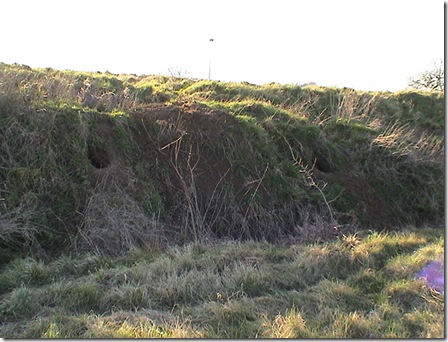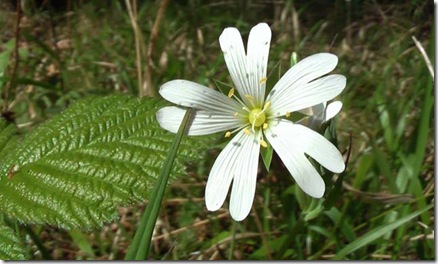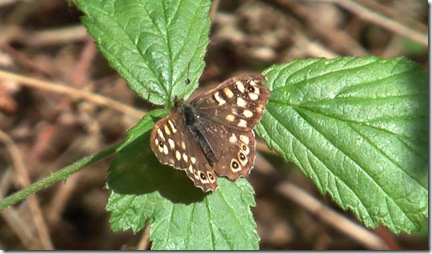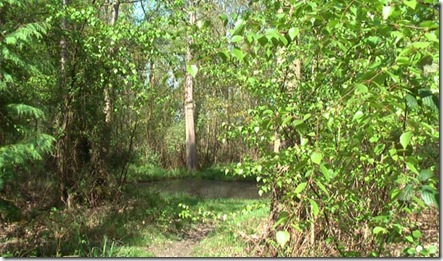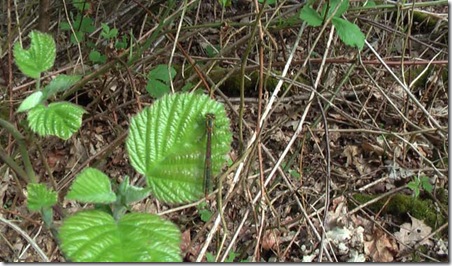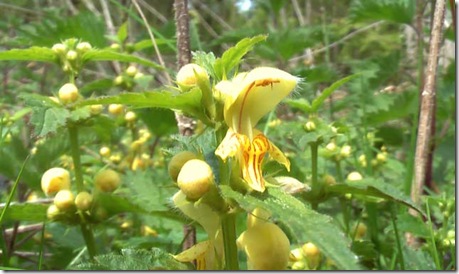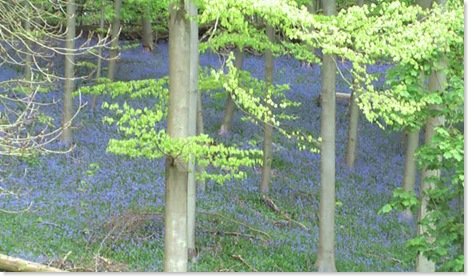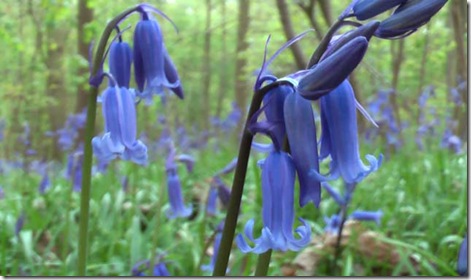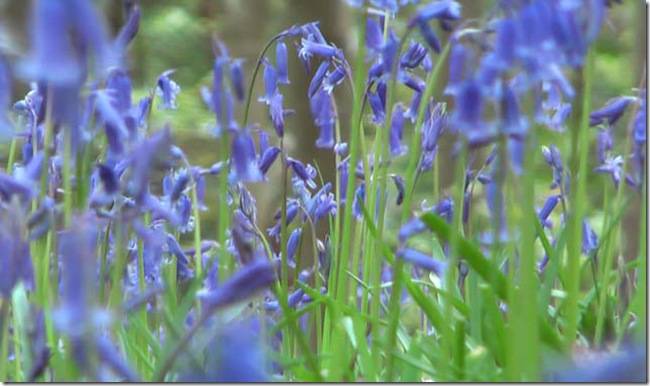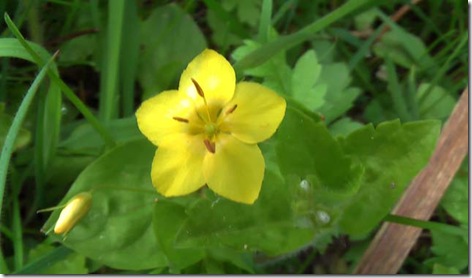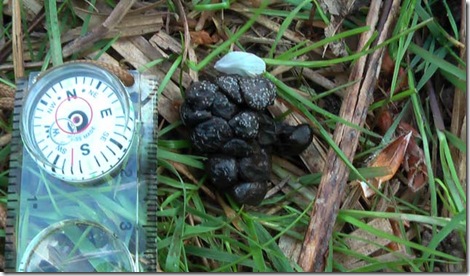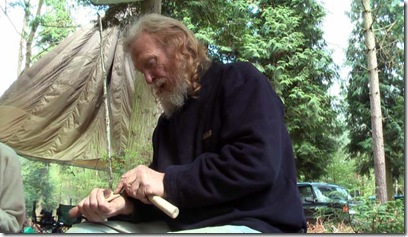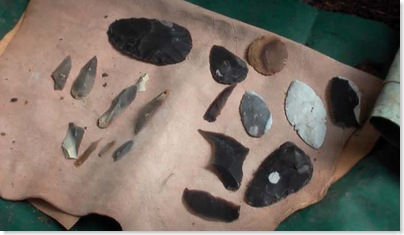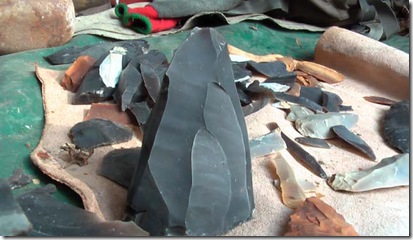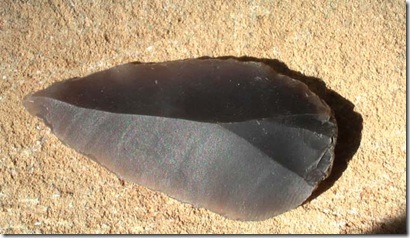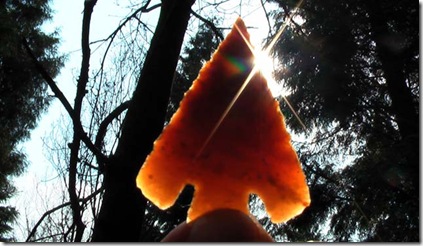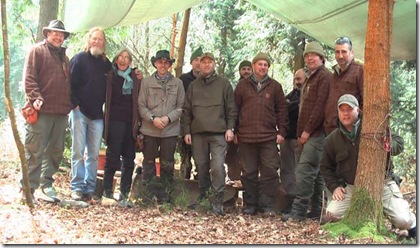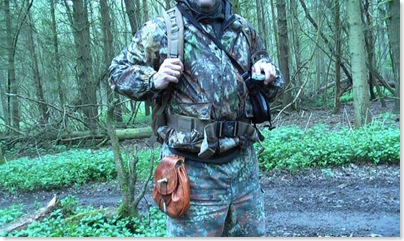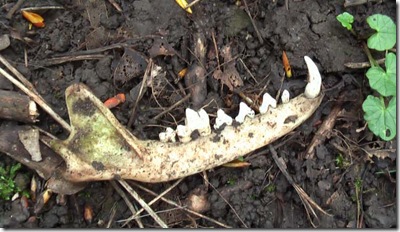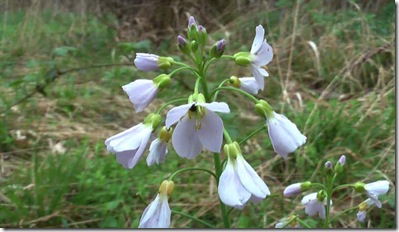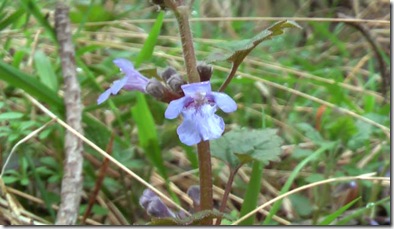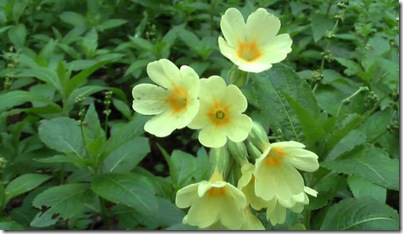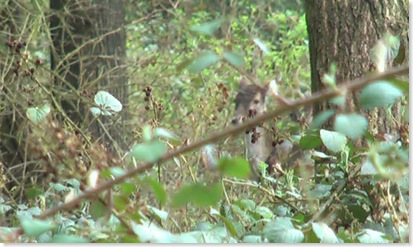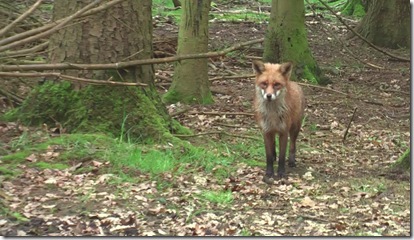Many people think that tracking involves finding a pristine print in mud and immediately identifying the animal. That's fine if you want to do that but there's much, much more.
This time of year is great for tracking because the foliage is low enough to identify runs and trails through the woodland. You can identify which animals uses the trails usually by any scat laying along the trail. Most animals will leave a territorial marker and feeding signs along the way. Even if you don't identify an individual print on the trail itself, you might be able to identify the animal from the width of the trail, how it meanders (or not) through the woodland and what obstacles it goes through or under. Stating the obvious as an example; if the trail runs under a low lying branch, it's unlikely to be used by fallow deer... unless they've perfected the limbo! Look out for hairs, nibbled plant stems, debris from feeding and scat.
This picture shows a fallen branch with bark stripped by deer and their feeding marks.
Invariably you might be able to follow the trail to a feeding area or even the animal's home. It might be a good idea to mark or map these trails and homes for future reference. Once the foliage springs up, they are pretty difficult to find again.
Trails, feeding areas and homes are the best areas to observe animals. But you have to be reasonably good at fieldcraft if you're going to be successful. One of the most difficult animals to observe are badgers. Their trails and runs, which are about the size of a single width human path may lead you directly to a sett. The sett is an easily identifiable D shape (rotated 90 degrees anticlockwise) and looks like it's been dug out by a bulldozer. At this time of year there should be stacks of spoil and bedding outside of some entrances. If it's a large sett, look for an entrance that is obviously being used but without much bedding outside. This will most probably be the most active entrance.
When watching any wildlife, especially badgers, the 6 S's may help you remember the fundamentals of fieldcraft. I've adapted this from army fieldcraft (I expect others may have a similar system).
Shape - Disguise your shape as much as possible especially the head area by using nets or natural camouflage. Try to break up the outline of your body. Wear dark clothing at least or bits of cammo clothing.
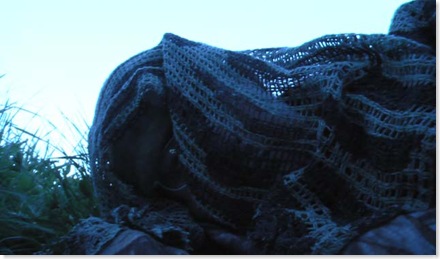
Shine - Cover stuff that glitters in the sun. A shiny face and hands are a dead giveaway even during the day but especially at dusk and at night. Wear gloves and a face veil or face covering or use mud or charcoal from the fire (don't use wet ash as it stings.)
Silhouette - Avoid being silhouetted against the skyline, on hills, embankments or against paths and open fields. Make sure there's something behind you like a bank or a tree or failing that lay down.
Scent - Avoid washing that day. Do not clean teeth or chew gum (spearmint is the worst lingering scent). Consider a smoke bath if you're serious and a second set of clothes which are rarely washed. Washing powder also contains UV which visually stands out to some animals like deer. You'll never disguise all your scent but by doing the above and additionally staying downwind, it will help.
Silence - Generally keep quiet although some sounds are acceptable and animals will get used to certain sounds. Scratching at your own clothes sounds like a scratching badger. They will only scratch when at ease with the world.
Still - The biggest give away is movement. Above all else... keep still!
I was out last night and again tonight and tomorrow watching my local badgers putting this into practice. See how I get on in a later post.
For more tips on badger watching, go to the excellent badgerwatcher.com.
Cheers,
Pablo.
